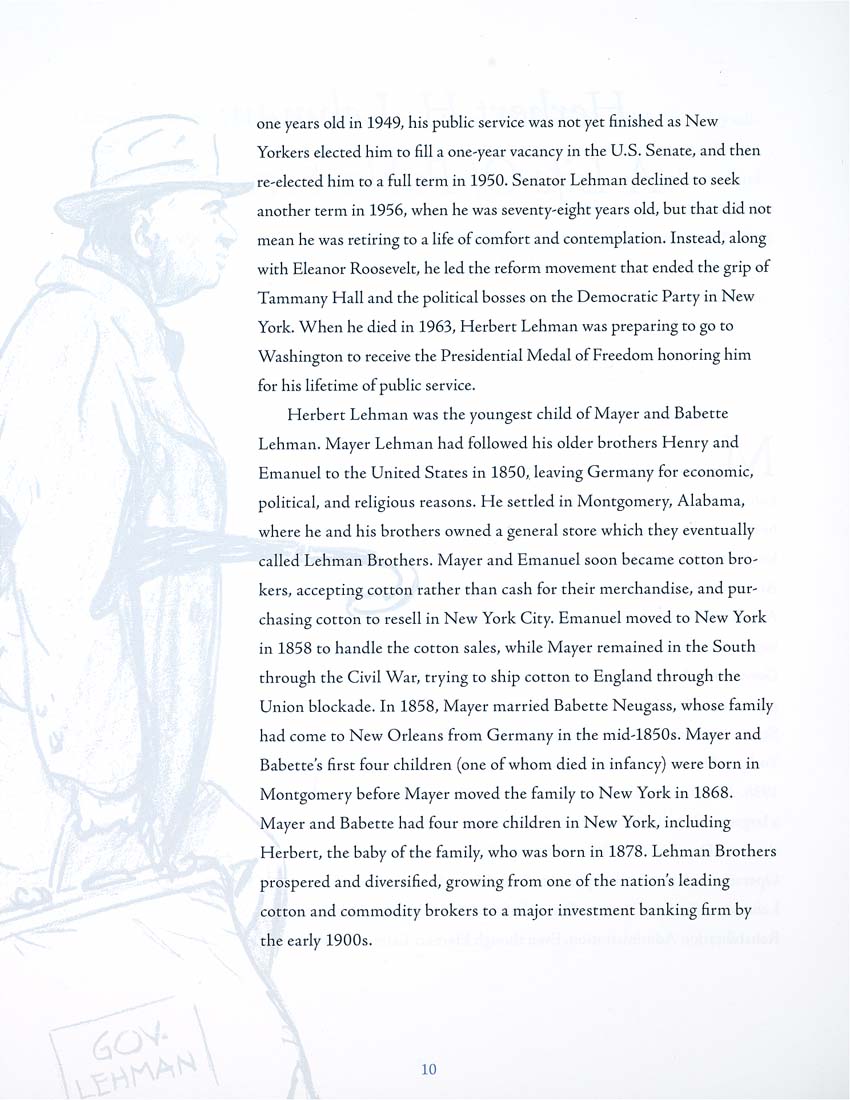"7^ ^
one years old in 1949, his public service was not yet finished as New
Yorkers elected him to fill a one-year vacancy in the U.S. Senate, and then
re-elected him to a full term in 1950. Senator Lehman declined to seek
another term in 1956, when he was seventy-eight years old, but that did not
mean he was retiring to a life of comfort and contemplation. Instead, along
with Eleanor Roosevelt, he led the reform movement that ended the grip of
Tammany Hall and the political bosses on the Democratic Party in New
York. When he died in 1963, Herbert Lehman was preparing to go to
Washington to receive the Presidential Medal of Freedom honoring him
for his lifetime of public service.
Herbert Lehman was the youngest child of Mayer and Babette
Lehman. Mayer Lehman had followed his older brothers Henry and
Emanuel to the United States in 1850, leaving Germany for economic,
political, and religious reasons. He settled in Montgomery, Alabama,
where he and his brothers owned a general store which they eventually
called Lehman Brothers. Mayer and Emanuel soon became cotton bro¬
kers, accepting cotton rather than cash for their merchandise, and pur¬
chasing cotton to resell in New York City- Emanuel moved to New York
in 1858 to handle the cotton sales, while Mayer remained in the South
through the Civil War, trying to ship cotton to England through the
Union blockade. In 1858, Mayer married Babette Neugass, whose family
had come to New Orleans from Germany in the mid-1850s. Mayer and
Babette's first four children (one of whom died in infancy) were born in
Montgomery before Mayer moved the family to New York in 1868.
Mayer and Babette had four more children in New York, including
Herbert, the baby of the family, who was born in 1878. Lehman Brothers
prospered and diversified, growing from one of the nation's leading
cotton and commodity brokers to a major investment banking firm by
the early 1900s.
|








